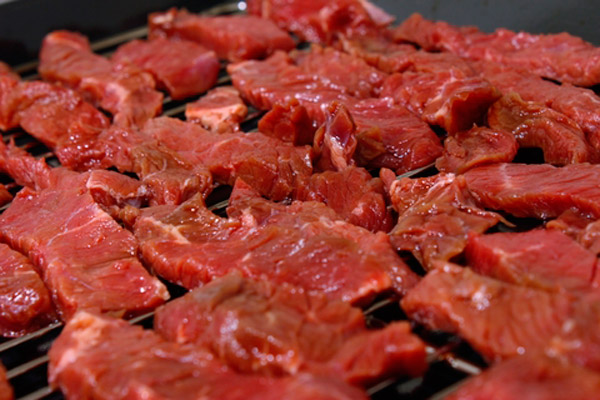Will artificial meat ruin our planet?
Scientists considered fake beef more harmful to the environment than natural.
Over the past 60 years, meat production on the planet has increased almost fivefold. And the more cows are bred, the more they emit methane – one of the causes of the greenhouse effect. Therefore, in some countries they decided to replace natural meat with artificial meat. But it turned out that the ecology could suffer even more from this: for every kilogram of minced meat grown in bioreactors, there may be 25 times more ozone-depleting emissions than per kilogram of natural product. The Parliamentary Newspaper found out what cellular meat is and what it is eaten with.

How it works
Prototypes of artificial meat, which is grown from animal cells, were presented in several countries. Open tastings were held in Japan, Australia, South Korea, and China. And in Singapore last year, cellular meat began to be sold in butcher shops.
In China, New Zealand and Australia, there are even government programs under which you can get grants to launch such projects, said Danil Maklakov, founder of a startup for the creation of cellular meat in Russia.
In Russia, scientists of the Belgorod State National Research University received samples of artificial meat. The technology was chosen as follows: scientists take stem cells from an animal, that is, cells capable of forming various body tissues, associate professor of the University Sergey Nadezhdin told the Parliamentary Newspaper. The biomaterial is placed in vials – wide tubes with an area of 25 square centimeters – with a nutrient medium, where vitamins and trace elements are added for cell growth and reproduction. After a few days, they are transferred to a bioreactor – a liter glass vessel, where the temperature is kept plus 37 degrees Celsius. Three weeks later, the scientists pour out the nutrient liquid from the vials and get the cell stuffing in the dry residue.
According to Nadezhdin, 400 grams of meat can be grown from one gram of cells. But it's too early to talk about industrial scale since this is laboratory research.
Projects to create artificial meat were launched both in Kazan and in Moscow. But it didn't go any further than that. You won’t find it in shops and restaurants. The artificial meat analogues offered there are not a substance grown from animal cells, but products based on plant components, usually soy.
The most expensive burger
Cellular meat is still being looked at. There are a lot of questions to him. So, scientists at the University of California have found that its production can negatively affect the environment. The study was published on the university's website. Experts have calculated that the mass production of artificial beef is fraught with a sharp increase in the volume of carbon dioxide and other gases that destroy the ozone layer.
Although these products were developed in order, on the contrary, to reduce the dangerous consequences. Over the past 60 years, meat production in the world has grown from 70 to 337 million tons per year. And by 2050, global demand will double again. This means that greenhouse gas emissions will also increase, mainly methane, which cows emit. Since animal husbandry accounts for about 18 percent of all anthropogenic emissions of gases that destroy the atmosphere, such an increase raises concerns. Therefore, they began to develop other ways to create meat, including growing it in test tubes. The logic seemed to be correct: if there are fewer cows, then there is no need to cut down forests for pastures, wastewater, and other resources.
But it turned out that not everything is so simple. To grow cellular minced meat, industrial-scale bioreactors are needed, which will leave a considerable carbon footprint, according to the University of California. According to their calculations, depending on the technology, each kilogram of beef from a test tube will account for 1.25–25 times more emissions than a kilogram of ordinary beef. Depending on the geography, the calf's diet, and other factors, from 9.6 to 432 kilograms of emissions enter the atmosphere during beef production. The median value is 60 kilograms. And with different production methods, there will be from 19.2 to 1508 kilograms of CO2 equivalent in a test tube.
British scientists are in solidarity with American scientists. In their opinion, if the meat enterprises of the future will work on oil and coal, they will cause irreparable damage to the climate.
Read more on: meatinfo